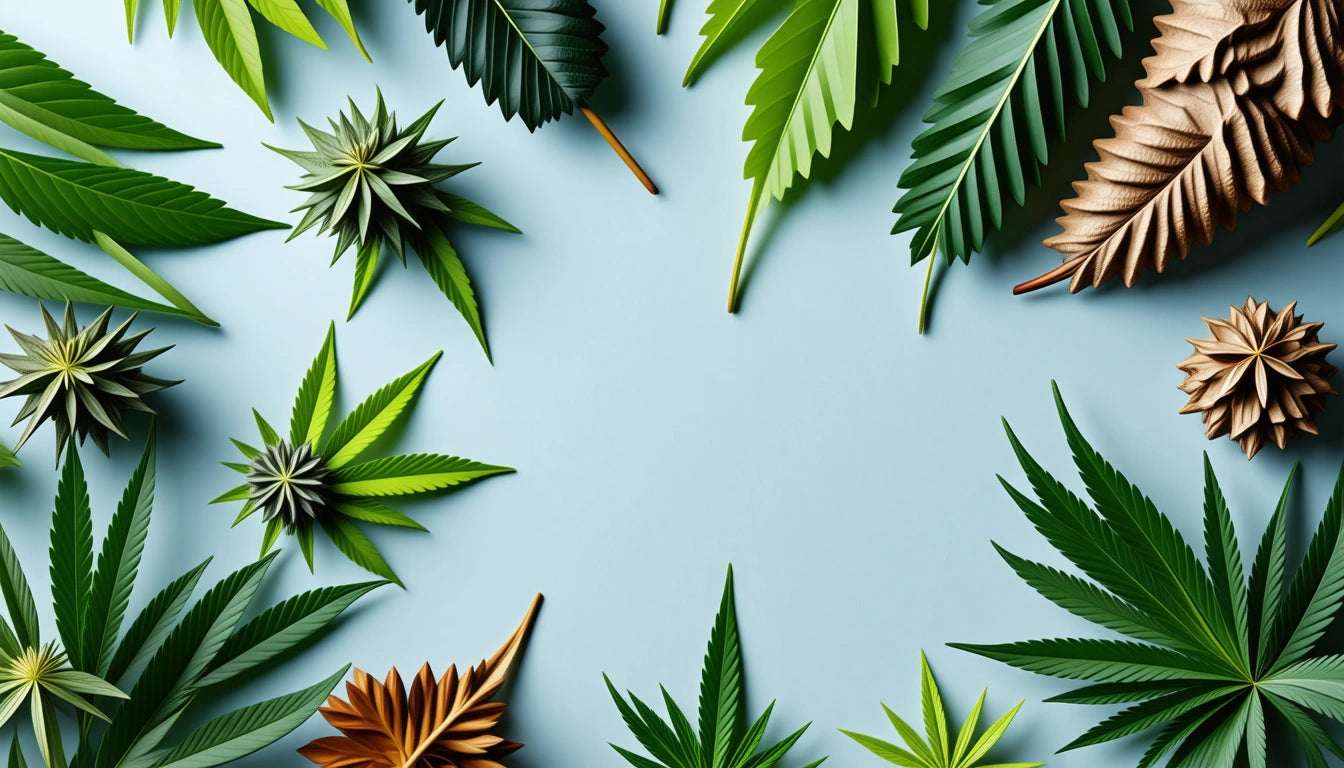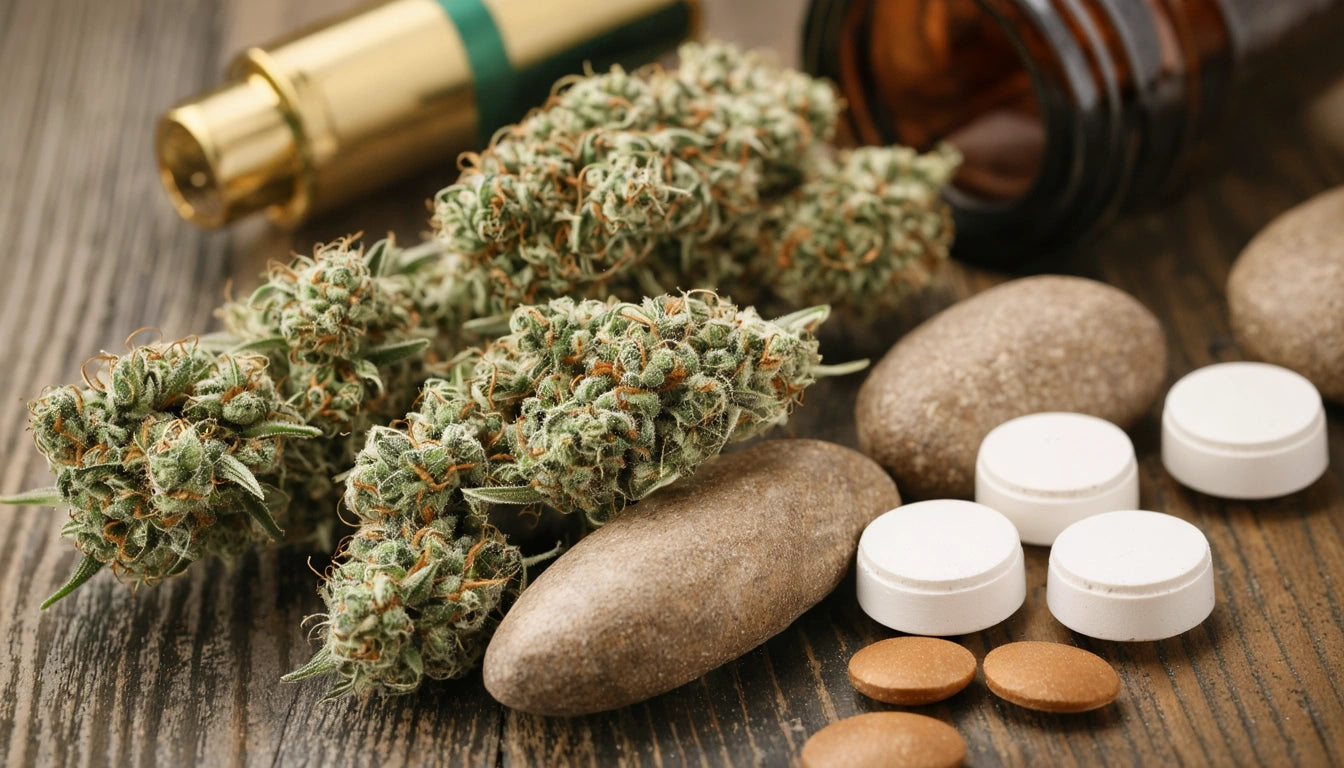Table of Contents
Top Pots for Growing Cannabis: The Best Sizes and Types for Indoor Cultivation
Selecting the right container is a fundamental decision that significantly impacts your cannabis plants' health, growth rate, and ultimate yield. From material choice to size considerations, the best pots for growing cannabis combine proper drainage, adequate space for root development, and appropriate design for your specific growing environment.
Pot Size Matters: Finding the Right Capacity
When determining what size pots for weed plants, consider both the growth stage and available space. Cannabis plants develop extensive root systems that require appropriate room to expand.
Seedling Stage
For seedlings and clones, smaller containers promote manageable growth:
- Solo cups (16-18 oz) with drainage holes
- 1-2 gallon pots for initial transplanting
- Small fabric pots (1 gallon) for young plants
Vegetative and Flowering Stages
As plants mature, they require progressively larger containers:
- 3-5 gallon pots for medium-sized plants
- 7-10 gallon containers for larger varieties
- 10+ gallons for outdoor or particularly large indoor specimens
A common rule of thumb suggests 1-2 gallons of soil per 12 inches of plant height. However, strain genetics also influence the best pot to grow in, as some varieties develop more extensive root systems than others.
Best Pot Materials for Cannabis Cultivation
The material of your container affects moisture retention, temperature regulation, and overall plant health. Each option presents distinct advantages for indoor cannabis cultivation.
Fabric Pots
Also known as smart pots, fabric containers have become increasingly popular among cannabis growers:
- Superior aeration prevents overwatering
- Air-pruning of roots creates denser, healthier root systems
- Excellent drainage reduces risk of root rot
- Portable and foldable for storage
While fabric pots require more frequent watering, they significantly reduce the risk of overwatering, which is a common issue for novice growers. Indoor cultivation techniques often benefit from the improved oxygen exchange these containers provide.
Plastic Containers
Traditional plastic pots remain popular due to their affordability and durability:
- Cost-effective for large operations
- Retain moisture longer than fabric alternatives
- Available in consistent sizes for uniform growing
- Lightweight and easy to move
When using plastic pots, ensure they have adequate drainage holes and consider elevating them slightly to improve airflow beneath the container.
Air Pots
These specialized plastic containers feature numerous side holes:
- Designed specifically for optimal root aeration
- Prevent root circling and promote lateral growth
- Balance between moisture retention and drainage
- Reusable for multiple growing cycles
Air pots combine many benefits of both fabric and traditional plastic containers, though they typically come at a premium price point.
Drainage and Aeration: Critical Factors
Regardless of the container type you select, proper drainage is non-negotiable for cannabis cultivation. Stagnant water leads to oxygen deprivation in the root zone, creating ideal conditions for root rot and pathogen growth.
The best pots for growing marijuana indoors incorporate these drainage features:
- Multiple drainage holes at the bottom
- Elevated design or use of pot risers
- Proper pot saucer to catch runoff without reabsorption
- Material that allows some moisture evaporation
When preparing containers, consider adding a layer of perlite or hydroton clay pebbles at the bottom to improve drainage further. This approach works well with quality cannabis soil to create optimal growing conditions.
Specialty Containers for Cannabis
Beyond standard options, several specialized containers cater specifically to cannabis cultivation needs.
Hydroponic Systems
For soilless growing:
- Net pots for deep water culture (DWC)
- Rockwool cubes for drip systems
- Specialized buckets for bubble systems
Hempy Buckets
These modified plastic buckets feature drainage holes placed 2-3 inches from the bottom, creating a reservoir:
- Combines benefits of both soil and hydroponic methods
- Reduces watering frequency
- Uses perlite/vermiculite or coco coir as medium
Auto-watering Containers
Self-watering pots with built-in reservoirs:
- Ideal for maintaining consistent moisture
- Reduces daily maintenance requirements
- Particularly useful for coco coir mediums
When selecting containers, consider your growing medium as well. Different soil compositions interact uniquely with various pot types, affecting watering schedules and nutrient availability.
Repotting Strategies for Optimal Growth
Transitioning cannabis plants to progressively larger containers promotes healthy development throughout their lifecycle. A well-planned repotting strategy prevents stress while maximizing growth potential.
Effective repotting approaches include:
- Starting in small containers (solo cups or 1-gallon pots)
- Transplanting to medium containers during early vegetative stage
- Final transplant to large containers before flowering
When transplanting, monitor plants carefully for signs of stress. Proper timing is crucial, as repotting too late can stunt growth while doing so too early may lead to overwatering in containers that are too large for the current root system.
To accurately monitor plant development and ensure precise timing for transplants, many growers use accurate digital scales to track growth rates and nutrient intake, helping optimize the repotting schedule based on quantifiable data.
Maximizing Yields with the Right Container Selection
The best pots for growing weed ultimately depend on your specific cultivation goals, space constraints, and growing style. By understanding how container choices influence plant development, you can make informed decisions that support healthy growth and abundant harvests.
Key considerations for maximizing yields include:
- Matching pot size to plant genetics and available space
- Selecting materials that complement your watering habits
- Ensuring excellent drainage regardless of container type
- Implementing a strategic repotting schedule
- Considering specialty options for specific growing methods
Remember that even the best containers require proper care practices. Regular monitoring of moisture levels, adequate fertilization with appropriate plant nutrients, and maintaining optimal environmental conditions remain essential regardless of your container choice.
By selecting the best pots for cannabis cultivation suited to your specific growing environment and techniques, you create the foundation for healthy plants with robust root systems, ultimately leading to superior quality and quantity in your harvests.











Leave a comment
All comments are moderated before being published.
This site is protected by hCaptcha and the hCaptcha Privacy Policy and Terms of Service apply.